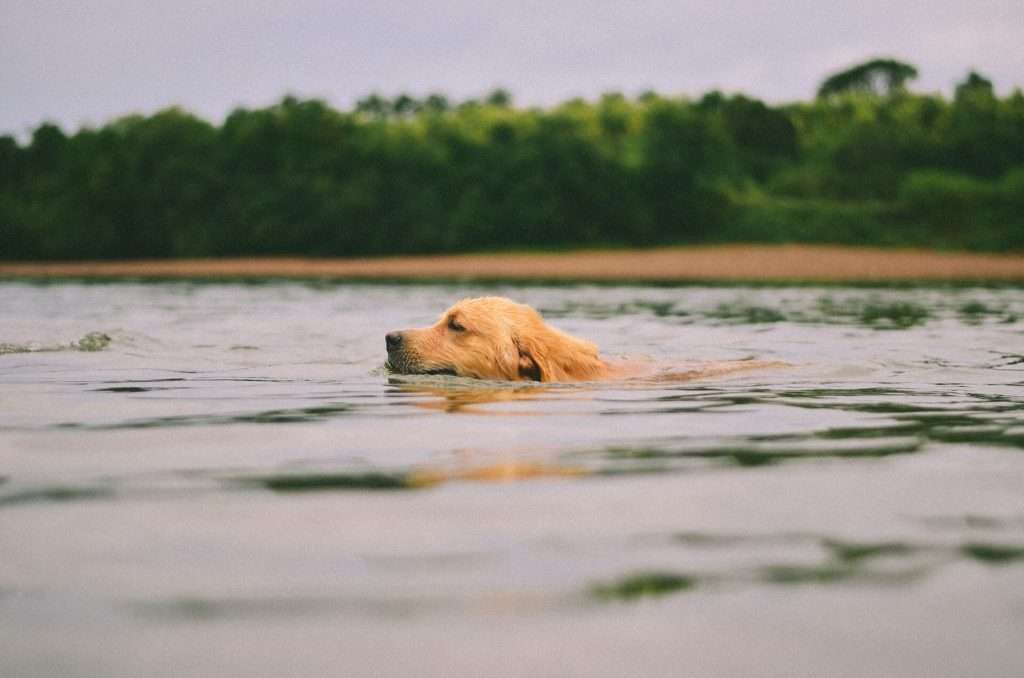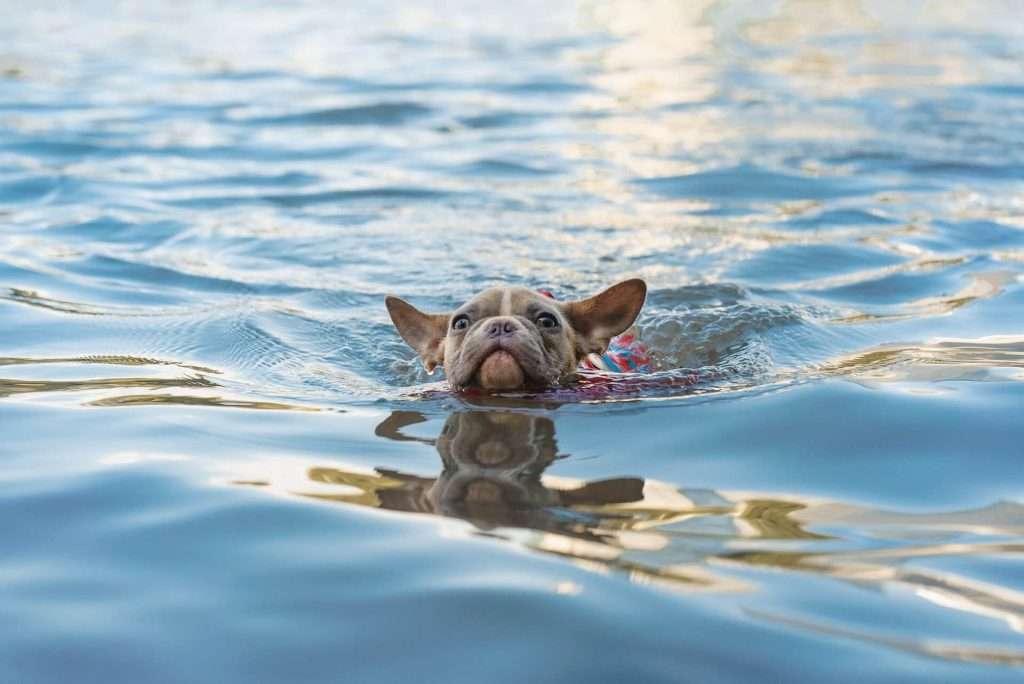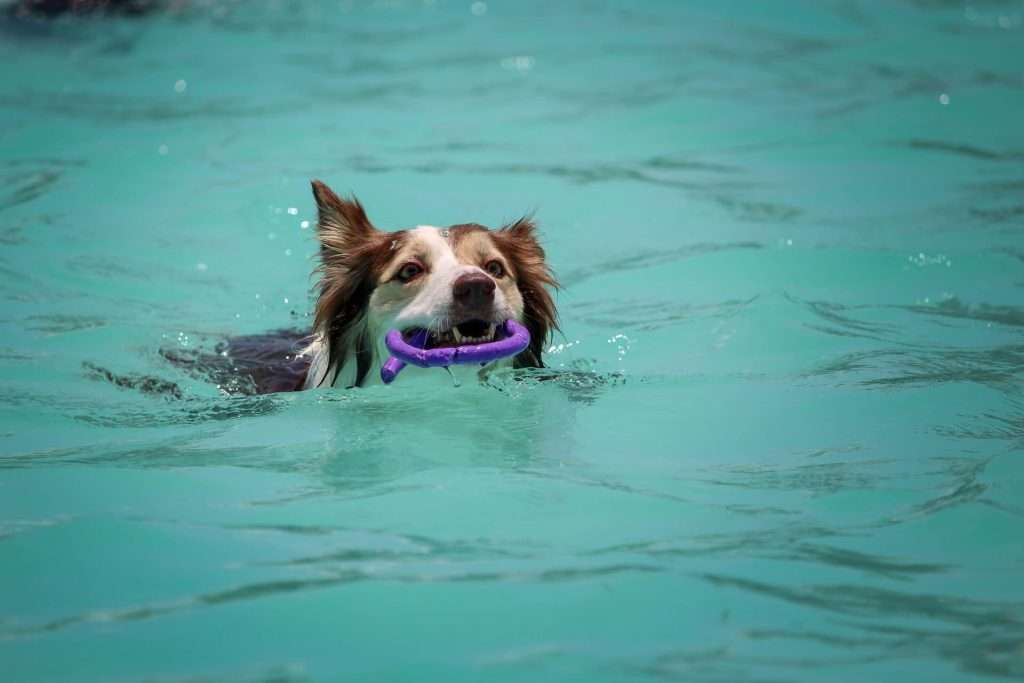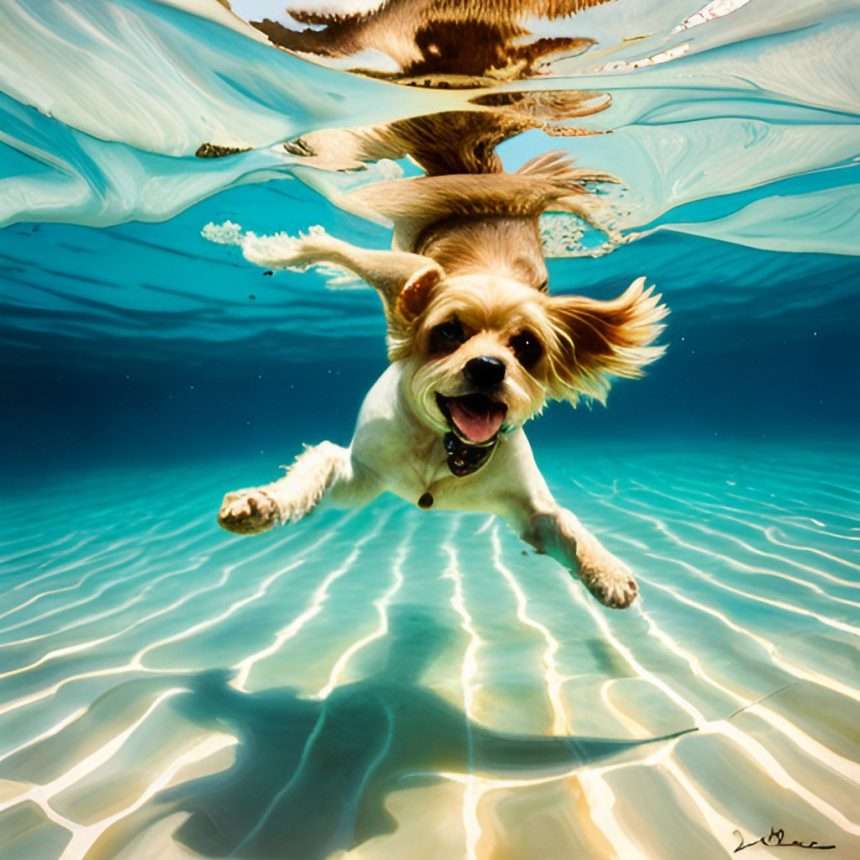Table of Contents
ToggleCanine Paddle: Unraveling the Mechanics of How Dogs Swim
From the gentle Labrador paddling through a calm lake to the energetic Border Collie chasing a ball into the surf, dogs swimming is a sight that brings joy to any pet lover’s heart.
But have you ever wondered how our furry friends manage to navigate the water so effortlessly? Let’s dive into the fascinating world of canine aquatics!
If you are enjoying this post, you are going to love our Ultimate Guide To A Pool Adventure! It has everything you need to know about taking your pup in the pool, from tips for getting them comfortable with the water to fun ways to play and have an amazing time.
The Anatomy of a Swimming Dog
Canine anatomy is well-suited for swimming. Dogs are naturally buoyant, thanks to their lung capacity and fur, which traps air.
However, it’s their unique paddling motion that aids in swimming.

Unlike humans who use a variety of strokes, dogs employ a version of the ‘doggy paddle.’
Their front legs do most of the work, paddling in a downward and outward motion, while their hind legs and tail provide stability and direction.
Dogs also tend to hold their breath underwater, exhaling once they surface.
However, not all dogs are created equal when it comes to swimming. Breeds like the Labrador Retriever and Portuguese Water Dog are natural swimmers, with webbed feet and water-resistant coats.
In contrast, breeds like Bulldogs and Pugs may struggle due to their short legs and brachycephalic (flat) faces.

Safety Measures for Swimming Dogs
Before letting your dog plunge into the water, consider these safety measures:
- Check Water Conditions: Avoid dirty or stagnant water that may contain harmful bacteria.
- Life Vest: Ensure your dog wears a proper fitting life vest, especially in deep or fast-moving water.
- Assess Your Dog’s Skills: Not all dogs are natural swimmers. Start in shallow water and see how your dog manages.
Encouraging Water-Shy Dogs
If your dog seems nervous around water, slowly help them overcome their fear:
Start Small: Begin with a kiddie pool or shallow water.
Make it Fun: Use toys or treats to make the water more appealing.
Join In: Dogs often feel more confident if their owner is in the water with them.

Swimming for Leisure vs Exercise
Swimming can be both a fun activity and an excellent form of exercise for dogs. Leisure swimming involves short and spontaneous bursts of paddling, often combined with play.
On the other hand, swimming for exercise involves longer, more consistent periods of swimming, which can help improve a dog’s fitness and stamina.
Fun Facts About Dogs and Water
Did you know that Newfoundlands have a water-resistant coat and webbed feet, making them excellent swimmers and rescue dogs? Or that the ‘doggy paddle’ is so instinctive, even puppies who’ve never seen water before will start paddling when held over it?
How Dogs Swim
Understanding how dogs swim can help pet owners ensure their furry friends are safe and having fun in the water. So, the next time you see your dog splashing around, you’ll have a newfound appreciation for their aquatic abilities!







